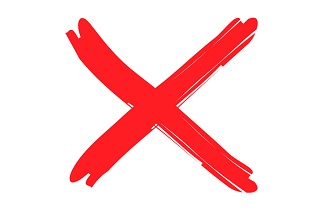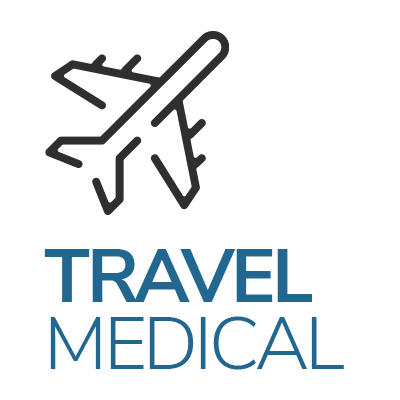How to get free or low priced prescription drugs
April 15th, 2019 by Ross Mason
You will often hear that healthcare is expensive in the USA, and until you actually experience it, it may be hard for you to really understand how expensive it can actually be. One aspect of this is prescription medications, and in this blog post we are going to focus on this and how you can obtain free or low-priced versions.
What is a Prescription Medication?
You may not be familiar with this term, but we are pretty sure you will all have taken prescription medications at some point in your life. Prescription medications are any drugs that your doctor recommends you should take. If you are sick or injured, your doctor will give you a special document (the prescription) that you will need to hand over to a pharmacy so they can provide you with the medications. These medications are usually only available with a prescription from a doctor, they cannot be purchased or taken without one.
Over-the-Counter Medications
You should not confuse a prescription medication with an over-the-counter medication. The difference between the two is that an over-the-counter medication is one that can be purchased without the need for a prescription from a doctor. In many cases your insurance plan will not cover the cost of an over the counter medication, but only for specifically prescribed medications, so it’s important to know the distinction.
Medications and Your Insurance Plan
Insurance plans vary in what they will cover, and this is also true when it comes to prescription medication coverage. Some plans will only cover certain drugs, others will cover all drugs but only a fixed percentage, some plans will cover all inpatient drugs but only a portion of outpatient drugs, so you will need to review your insurance coverage to find out what your plan specifically covers.
For nearly all international insurance plans, the way you get reimbursed for your prescribed medications is usually always the same. Some plans may have a special drug card, but this it not that common, so that means you will have to pay for all your medications upfront and then submit your receipts with a claim form to be reimbursed. Oftentimes some drugs can be hundreds of dollars (depending on the drug) so this can be a hard pill to swallow!
Free or Discounted Drugs
The good news is that there are some good free or discounts drug options that are available to students. It could be dependent on your location in the USA, but with a little bit of research (and our handy blog post here) you might be able to save yourself some money!
Here is a list of some of the programs that are available:
- ShopRite – this grocery store chain, that has in-house pharmacies, offers a free diabetes medication program. You can learn more about this on their website.
- Publix – another grocery store chain, that also has in-house pharmacies, offers a free medication program for selected medications as long as they are prescribed by your doctor. They also have a discounted list of drugs that will only cost you $7.50.
- Walmart – everybody knows Walmart and they have locations all over the USA. Take your prescription to their pharmacy, and as long as its generic form of the drug, it will only cost you $4!
- PriceChopper – another grocery store in the USA that offers free diabetes medication and discounted generic drugs that starts from just $3.99!
Discount Drug Cards
The other way to get discounted prescription drugs is through a discount drug card, which are becoming more popular in many international student insurance plans. These drug cards work by giving you a discount on popular medications, and while they are not a direct insurance benefit, they do give you instant savings. To use your discount drug card, you will just need to show the card to the pharmacy and they will automatically apply the discount. You might need to register your card beforehand and the cards are oftentimes only accepted at certain pharmacies, so be sure to check ahead of time.
Online Pharmacies, Great Savings?
While the idea might sound nice, and you could be lured into great savings and discounts, we typically do not recommend that you use online pharmacies to fill your prescriptions. There has been a sharp rise in online, fake pharmacies that have scammed customers out of their money or provided the incorrect medications. With all the options listed here in the blog post, you should hopefully have a few options to lower your prescription medication costs.
Hopefully this has provided you with all the details you need about pharmacies, prescription drugs and how to get cheap or low-cost drugs! Please contact us if you have any questions, or would like to know how our plans work with prescription drugs.
International Travel Medical Insurance Changes for 2019
April 1st, 2019 by Leah HammondThe 2019 Atlas Travel Medical plan changes were rolled out as of April 1st, 2019 and there are some notable benefit updates.
The Atlas Travel plan is a great option for those needing coverage outside of their home country for as little as 5 days up to one year. Whether you need insurance for a quick vacation or a long-term study abroad trip, the Atlas Travel plan will provide you with the peace of mind to know you are covered in case something unexpected happens.
The plan updates for 2019 include:
- New benefit for a lost or stolen passport or travel visa, up to a $100 maximum
- Lost checked luggage coverage increased from $500 to $1,000
- Personal liability coverage increased from $10,000 to $25,000
- Accidental death and dismemberment decreased from $50,000 to $25,000
- Emergency dental for an acute onset of pain increased from $250 to $300
- 100% coverage on eligible medical expenses, after the deductible, up to the plan’s policy maximum, no matter where you seek treatment!
Please note that children under the age of 9 were previously free on the plan when purchased with an adult, however, this is no longer available.
You can view a more detailed summary of benefits for the Atlas Travel plan on the benefits page.
The plan also works well for dependents or traveling companions, it will meet the J visa requirements, as well as the Schengen Visa requirements, and can be used during your OPT period!
To generate a quote or to purchase the plan right online, please click below:
Our insurance experts are on hand to help you with your insurance purchase, or to answer any questions you may have. Please do not hesitate to contact us if you have any questions about the Atlas Travel plan!
Filing a Claim with the Student Health Advantage or Patriot Plans
February 20th, 2019 by Jennifer FrankelIf you get sick or have an accident while covered on the Student Health Advantage or Patriot plans, then you will need to file a claim with International Medical Group (or, IMG). This blog will walk you through the steps of filing a claim, which we hope you find quick and easy!
Step 1. Go In-Network
Both the Student Health Advantage and Patriot Plans use the First Health network. Bring your ID card when you go to the doctor, hospital, or clinic so that they have your insurance information. If you don’t have your card, be sure to contact the provider and give them your insurance information. You will likely only need to pay for the deductible when you go for treatment as long as you go inside the network.
Precertification: Please note that pre-certification is required for all hospitalizations, surgeries, CAT scans, MRI’s, maternities, treatment in an extended care facility, home nursing care, prosthesis, and durable medical equipment. This requires that you call the number on your ID card as soon as possible, or prior if possible. You can also pre-certify online through your MyIMG portal.
Step 2. Submit A Claim Form
Every new condition will require a claim form to be submitted directly to insurance@imglobal.com. If you had an accident, you will need to submit BOTH the claim form and the accident claim form. Prescription medication also requires you to submit the initial prescription from the doctor along with the pharmacy receipt as this is only paid via reimbursement.
A new claim form is needed for every new accident or illness, but you do not need to submit another claim form if it’s for a follow up visit. You will have 90 days to submit this, and you can send this along with any bills or receipts you received when seeking treatment.
IMG will accept claims in any language or currency.
Tip: If you paid out of pocket, ask your medical provider for an itemized bill and your medical records at the time of treatment in case this is requested.
Step 3. Wait for the Claim to Be Processed
Claims typically take 30 business days on average once all of the necessary documentation is received to be processed. After about a week, you can check the status of your claim in the MyIMG portal, emailing insurance@imglobal.com, or by calling the number on the back of your insurance ID card to see if they are missing any additional information.
Step 4. Receive Explanation of Benefit and Reimbursement/Payment
Once a claim is processed, you will receive an explanation of benefit (EOB) in the mail detailing what was and wasn’t covered, and why. If you went in the network and provided your insurance information, the insurance company will pay the provider directly. If you went outside the network, or paid out of pocket, then the money will be reimbursed to you either by check or wire transfer (you would indicate your preferred method on the claim form). The EOB will also be available for download through your MyIMG portal.
Step 5. Pay Your Provider
If you had any out of pocket deductibles, copays, coinsurance, or if there were uncovered benefits, you will be responsible for paying this directly to the provider. To know how much to pay, refer back to the Explanation of Benefits.
If you have any questions about your claim, please email insurance@imglobal.com or call +1 (800) 628-4664 (in the US or Canada)/+1 (317) 655-4500 (internationally).
Coverage for Maternity in the U.S. for International Students
September 21st, 2018 by Leah Hammond
When choosing health insurance for your time abroad, it’s important to make sure your plan includes all the benefits you need. Pregnancies can occur, planned or not, so if there’s a chance that you could become pregnant, you will want to make sure that your plan includes coverage for maternity. Pregnancy is an exciting time in one’s life but the added stress of uncovered medical bills can be overwhelming, so it’s important to make sure you have proper insurance coverage in place!
Maternity Costs in the United States
Maternity expenses in the United States are significantly higher than around the world, and the cost to have a baby can add up quickly. The price of health care varies dramatically by state and will even depend on which hospital you visit, so it’s nearly impossible to put a price tag on the cost of giving birth in the United States. Luckily, your health insurance plan will cover a large amount of your maternity expenses, so if you’re considering having a baby while you in the U.S., it’s very important to have a plan that includes comprehensive maternity coverage.
What is Included in My Plan’s Maternity Coverage?
Maternity care encompasses a wide range of services, from prenatal care and delivery to postnatal care after the baby is born.
- Prenatal Care is important for the health of you and your baby during your pregnancy. These check-ups will include ultrasounds, which typically cost about $200 each, routine blood tests, and urinalysis tests to monitor the baby’s development. Generally, you’ll need a pre-natal check-up every 4 to 6 weeks for the first 32 weeks, every 2 to 3 weeks for the 32nd to 37th weeks, and every week from the 37th week until delivery. Prenatal care typically costs around $2,000 or more in the USA without insurance, and can be more if you have a high-risk pregnancy.
- Labor and Delivery of a Baby is the most expensive medical cost associated with pregnancy. This includes a hospital stay, which can vary in length depending on the type of birth and complications. On average, without insurance, an uncomplicated vaginal birth will cost around $12,000, while a standard caesarean section will cost $17,000.
- Postnatal Care lasts six to eight weeks after the birth and ensures the physical and emotional health of the mother and baby. The typical cost of a postpartum checkup is similar to that of a prenatal visit — usually between $100 and $200 per visit without insurance.
What are My Insurance Options?
It is important to be prepared and do your research before coming to the United States, especially when it comes to finding the right insurance plan for you! Most insurance plans in the U.S. will not cover a pregnancy if you become pregnant before your policy becomes effective, so you’ll want to keep this in mind when considering your options.
Major Medical Plan
The Global Medical Plan – offers maternity coverage on the Platinum level. This plan does have a 10-month waiting period before you can receive full maternity benefits. It is a great long-term plan option for both students and dependents in the United States.
Student Plans
The Student Secure and Student Health Advantage plans – also offer maternity coverage on certain levels of the plan. On the Student Secure plan, maternity coverage is available on the Budget, Select, and Elite levels. On the Student Health Advantage plan, maternity coverage is available on the Platinum level. To be eligible for these plans, you do have to be enrolled as a full-time international student with a valid student visa. It’s important to keep in mind that the plans will only offer coverage for maternity if you become pregnant after the effective start date of your plan.
Already pregnant?
Unfortunately, we do not have any plans that would cover your maternity expenses. However, our Atlas Travel Medical plan will cover the complications of pregnancy for the first 26 weeks should something happen.
Maternity coverage is just one of many important benefits to keep in mind when choosing your insurance plan. For more information on the best option for you, please visit our Insurance Explained section or contact our customer service team!
The Travel Video Contest is Back!
September 14th, 2018 by Sutherland Beever
The Travel Video Contest on InternationalStudent.com is back with another $4,000 Grand Prize to give away!
To enter this year’s Travel Video Contest, all you need is a bit of initiative, the desire to travel or study abroad and some decent videotaping equipment. It’s very likely you already have been bitten by the travel bug and you may even have a smartphone in your pocket to film your project, so what are you waiting for? Oh, and did I mention that the Grand Prize winner gets $4,000?!? Yes, you read that right – $4,000!
Want to check out the other great prizes?
Here’s What you Need to Know:
- Your video needs to be high quality, and can’t be more than 4 minutes long.
- Current international students must make a video about a trip that you would like to take sometime in the future.
- Aspiring international students need to make a video about the experiences and knowledge that you will gain as an international student.
- Your video needs to stand out among the competition to win the Grand Prize title, so be sure to include your own swagger and creativity within your submission.
Need some tips and tricks before you start filming?
Dates to Remember:
Submission Deadline – October 9th, 2018
Finalists Announced – the week of November 7th, 2018
Winners Announced – November 16th, 2018
This is one of those amazing opportunities where there really isn’t a ‘right’ or ‘wrong’ way to go about your film, presuming you follow the short set of rules. Other than the length and subject matter of your video, so feel free to make your submission as serious or as goofy as you are. You are the director, the subject matter and the editor of your own film, so all of the decisions are yours to make!
International Student Insurance Recently Targeted in Phone Scam
September 10th, 2018 by Bryanna DavisAt International Student Insurance we have recently been the target of a malicious phone scam. Our phone number is being spoofed by a disreputable telemarketing company and used to call individuals throughout the United States and around the world. Individuals who have received a call from these telemarketers are also a victim in this scam and should not give out any personal information.
The Federal Communications Commission defines illegal spoofing as the following: “Caller ID spoofing is when a caller deliberately falsifies the information transmitted to your caller ID display to disguise their identity. Spoofing is often used as part of an attempt to trick someone into giving away valuable personal information so it can be used in fraudulent activity or sold illegally, but also can be used legitimately, for example, to display the toll-free number for a business.”
Please note that we do not call potential customers asking for business, and we will never call you asking for personal information over the phone. If you have received an abusive call, the call was not from us – even if you call back the number from caller id and it directs to us. Instead, the fraudulent callers have spoofed our number.
We have reported this situation to the FCC and FTC for investigation. We regret any inconvenience this may have caused you and are doing everything possible to stop this from continuing. You can learn more about robocalls and spoofing from the Federal Trade Commission, and you can use that same link to report the abusive call.
5 Steps to Waive Your School’s Group Insurance Plan
July 13th, 2018 by Jennifer FrankelIf you will be an international student attending college or university in the US, then chances are your school has certain health insurance requirements to make sure you are properly protected.
Many schools have a group plan that they automatically enroll their international students in, but may give you the option to opt out if you can show proof of an alternative insurance policy. If you decide to waive your school’s group insurance plan, you will not only be able to find a plan that meets your unique needs, but oftentimes you will find plans that are less expensive. In some cases, you can save thousands of dollars!
In this blog, we will walk you step-by-step on how you can save money, find a plan specific to your needs, and waive your school’s group insurance plan:
To see which plan will work, use our school requirements database tool to locate your college or university, and see which of our plans will meet. You can also contact us to confirm whether our plans will work. Once you’ve find the right plan, you’ll need to enroll and pay for the policy. Depending on the plan, you may be able to get same day or next day coverage, and you’ll receive an email confirmation right away.
Look at our School Requirements page to find a plan that meets your school’s requirements
If there is a portion of your form that needs to be completed by the insurance company, be sure to fill out the student section, and include your name, certificate/policy number, and signature if needed. You can fax or email the form to ISI at:
Fax: 904-212-0412
Email: info@internationalstudentinsurance.com
Our typical turnaround time is 2-3 business days.
Depending on the school, the insurance company can submit the waiver/compliance form on your behalf. If you prefer to do it, the insurance company can send this back to you to submit. Be sure you keep track of any deadlines of submission!
Once your school has reviewed your waiver, they will let you know whether your plan has been accepted. If not, they will tell you why it wasn’t accepted (and if not, be sure to ask!). Many schools may put a hold to register for classes, so you’ll want to get this done as soon as possible.
To see what plans work for you to waive your school’s group insurance plan, check out our school requirements database and if you need any help, we have customer service representatives available to help you every step of the way.
Does my health insurance cover car accidents?
June 22nd, 2018 by Ross Mason When searching for health insurance, there are lots of things you need to take into consideration before purchasing coverage to ensure the plan fits your needs. There is the cost of the plan, making sure the benefits are what you need and required by your school (if they have requirements) and then there are the exclusions on the policy – what the plan does not cover.
When searching for health insurance, there are lots of things you need to take into consideration before purchasing coverage to ensure the plan fits your needs. There is the cost of the plan, making sure the benefits are what you need and required by your school (if they have requirements) and then there are the exclusions on the policy – what the plan does not cover.
One area of coverage that is oftentimes overlooked is coverage for car accidents. Whether you are driving a car or you are a passenger, you will want to make sure that your plan covers you in case something happens as not all plans are the same and some may limit or exclude it!
Auto Insurance Coverage
When we talk about car accidents, we are referring to coverage for bodily injuries that occur from being in a car accident and NOT damage to your car or another person’s car. Health insurance plans will never cover standard auto insurance benefits which actually insure the car – so we need to be clear on this. If you are driving a car, you will need to make sure you have appropriate auto insurance in place, which can either be obtained from the company you rented the car from, or whosever car you are borrowing or using.
Included Benefits
Your biggest concern when looking for an appropriate insurance plan is making sure that the plan will cover you if you are in an auto accident. If your plan does not mention car or auto accidents in the benefits or exclusions, then typically your plan will include full coverage for those events. Unfortunately, not all insurance plans are the same and there are good number of plans out there that will either limit, or perhaps even fully exclude car-related injuries. You cannot assume that this will automatically be covered, so it’s important to check the policy benefits and the exclusion list (in most cases it will be listed as a policy exclusion) located in the policy certificate.
Excluded in Certain Situations
Even if your plan does include coverage for car accidents, you should be mindful that other exclusions may come into play when either driving or as a passenger in a car. The most common areas are:
- Alcohol or drug abuse
- Racing
- Committing a felony
If your injury from a car accident was in anyway related to any of the items listed above, they would typically be excluded and you would be responsible for your full medical costs.
Medical Coverage from an Auto Plan
There could be some instances where the auto insurance plan for the car you are driving, or being driven around in, will cover some or all of your medical costs if there was an accident. This will depend on the type of auto insurance plan, so while it could be a backup, it should not be relied upon as the sole way to be covered from an auto accident.
What if I get hit by a car?
Most of the scenarios in this blog have dealt with car accidents as either a driver or passenger, but what if you are hit by a car either riding your bike or walking in the road? In nearly all circumstances, unless the incident was related to one of the exclusions of your policy, this should be covered. In many cases, if this were to happen, some state laws in the US require that auto insurance plans include some form of third party coverage. It might only be a limited amount, maybe $10,000 or $20,000, but it could be higher depending on the type of auto insurance the driver had. These funds would pay your medical expenses, and then anything over these amounts would be your responsibility. If you have a health insurance policy, however, your health insurance would kick in and pay these benefits instead.
Hopefully this has given you some guidance on what to look for when purchasing an insurance plan. It can start to get tricky when you are dealing with car accidents because there could be coverage from the actual auto policy, as we highlighted above, but then if there are two cars involved, the one responsible for the accident should actually pay. So the best way to handle this is to make sure your own insurance plan covers what you need and you do not rely on auto insurance medical coverage.


 If you are coming to the United States on a J1 or J2 visa, then you will be required to have health insurance for your entire stay in the US. In almost all cases, you will be required to show proof of insurance at the consulate or embassy before you are issued your visa, and in order to maintain status, you will need to have coverage continue until you return home. There are many J visa health insurance plans that you can choose from that will meet these requirements and cover you in the US.
If you are coming to the United States on a J1 or J2 visa, then you will be required to have health insurance for your entire stay in the US. In almost all cases, you will be required to show proof of insurance at the consulate or embassy before you are issued your visa, and in order to maintain status, you will need to have coverage continue until you return home. There are many J visa health insurance plans that you can choose from that will meet these requirements and cover you in the US.





